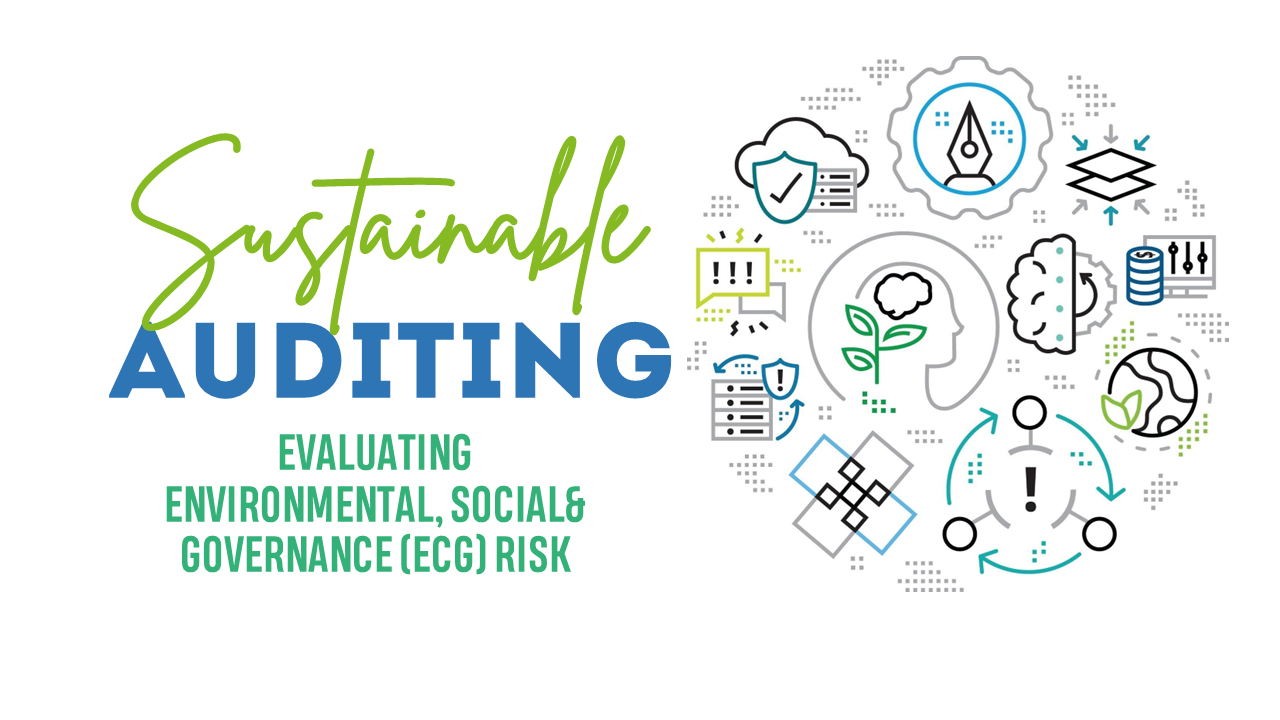SUSTAINABLE AUDITING: EVALUATING ENVIRONMENTAL, SOCIAL AND GOVERNANCE (ECG) RISKS- Part II
GOVERNANCE RISKS
What is Governance Risk
Governance risk refers to the potential risks and challenges associated with the governance practices and structures within an organization. It encompasses issues related to corporate governance, ethical conduct, transparency, accountability, and the overall effectiveness of the governance framework. Evaluating governance risks is crucial for ensuring responsible and sustainable business practices.
Impact of Governance risks
- REPUTATIONAL DAMAGE
- Governance risks, such as unethical conduct, lack of transparency, or failure to comply with laws and regulations, can lead to reputational damage for organizations.
- Negative publicity, loss of trust from stakeholders, and damage to the brand image can have long-lasting consequences and affect customer loyalty, investor confidence, and business relationships.
- LEGAL AND REGULATORY CONSEQUENCES
- Non-compliance with governance regulations and laws can result in legal and regulatory consequences for organizations.
- This can lead to fines, penalties, litigation, and damage to the organization's financial standing.
- Organizations may also face regulatory scrutiny, investigations, and potential loss of licenses or permits, which can disrupt operations and result in financial and operational setbacks
- FINANCIAL PERFORMANCE
- Governance risks can impact the financial performance of organizations.
- Inadequate financial management, poor internal controls, or fraudulent activities can lead to financial losses, decreased profitability, and inefficient resource allocation.
- Investors and financial institutions may be less willing to invest or provide financing to organizations with governance concerns, limiting access to capital and growth opportunities.
- STAKEHOLDER CONFIDENCE & RELATIONSHIPS
- Governance risks erode stakeholder confidence and trust in organizations.
- Shareholders, customers, employees, and business partners may question the organization's ability to operate ethically, make sound decisions, and manage risks effectively.
- This can lead to strained relationships, reduced customer loyalty, and difficulties in attracting and retaining talent and business partners.
- EMPLOYEE MORALE & PRODUCTIVITY
- Poor governance practices can negatively impact employee morale and productivity.
- Lack of transparency, ineffective leadership, and ethical concerns can lead to a decline in employee engagement, trust, and motivation.
- Employees may feel demotivated, which can result in decreased productivity, higher turnover rates, and difficulties in attracting and retaining skilled employees.
Key Areas Of Assessment
BROAD EFFECTIVENESS
-
Evaluating the effectiveness of board meetings, decision-making processes, and oversight of management.
-
Reviewing the existence and functioning of board committees, such as audit, compensation, and governance committees
COMPLIANCE & LEGAL RISK
- Assessing the effectiveness of internal controls and risk management systems to prevent legal and regulatory violations
- Reviewing the organization's response to and resolution of past compliance issues or legal disputes.
ETHICAL CONDUCT & INTEGRITY
- Evaluating the implementation of whistleblower protection mechanisms and channels for reporting unethical behavior
- Reviewing the organization's efforts to promote a culture of integrity and ethical decision-making throughout the organization
SUSTAINABLE AUDITING PROCESS
Steps Involved in Sustainable Auditing Process
- Establish Audit Objective & Scope
- Plan The Audit
- Data Collection & Analysis
- Evaluation Of Esg Risk
- Assess Compliance & Conformance
- Report & Communication
- Follow Up Monitoring
- Continuous Improvement


